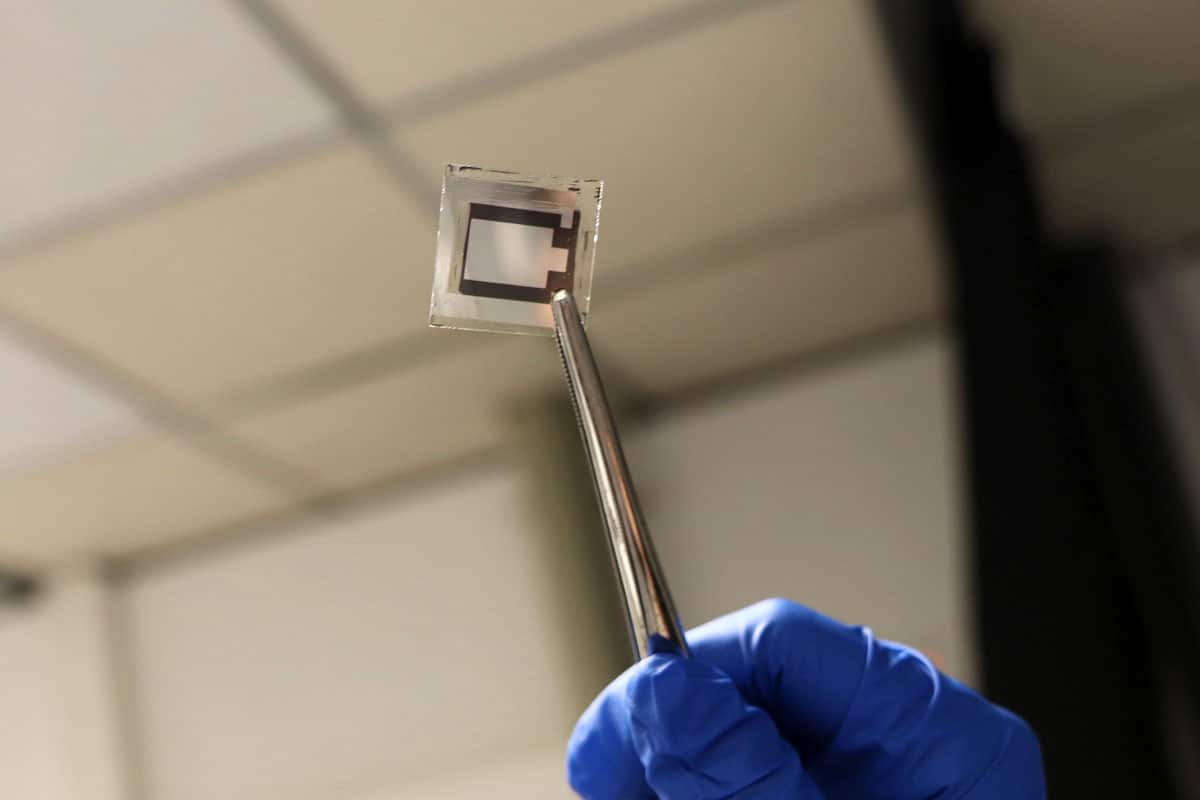
Perovskite solar cells (PVSCs) are a promising alternative to traditional silicon-based solar cells due to their high power conversion efficiency and low cost. However, achieving long-term stability has been one of the major challenges in their development.
Now, a research team from the City University of Hong Kong (CityU) has developed an innovative multifunctional and non-volatile additive that can improve the efficiency and stability of perovskite solar cells by modulating perovskite film growth. This simple and effective strategy has great potential for facilitating the commercialization of PVSCs.
While PVSCs have attracted significant attention in recent years, their efficiency and stability are still affected by the severe energy loss associated with defects embedded at the interfaces and grain boundaries of the perovskites. Therefore, the intrinsic film quality of metal halide perovskites is very critical to increasing the power conversion efficiency and long-term stability of PVSCs.
Many previous research studies have focused on improving film morphology and quality with volatile additives. However, these additives tend to escape from the film after annealing, creating a void at the perovskite-substrate interface.
The CityU researchers found that by adding a multifunctional molecule (4-guanidino benzoic acid hydrochloride, (GBAC)) to perovskite precursor, a hydrogen-bond-bridged intermediate phase is formed and modulates the kinetics of perovskite film growth. The additive enables the formation of large perovskite crystal grains and coherent grain growth from the bottom to the surface of the film.
This module can also serve as an effective defect passivation linker – a method to reduce the defect density of perovskite film – in the annealed perovskite film due to its non-volatility, resulting in significantly reduced non-radiative recombination loss and improved film quality.
The enhanced film morphology results in significantly reduced defect density, thus boosting the power conversion efficiency of inverted (p–i–n) perovskite solar cells to 24.8% (24.5% certified) with a low energy loss of 0.36 eV. Additionally, the unencapsulated devices exhibit improved thermal stability beyond 1,000 hours under continuous heating at 65 ± 5 °C in a nitrogen-filled glovebox while maintaining 98% of the original efficiency.
This effective approach can also be applied to wide-band gap perovskites and large-area devices to show reduced voltage loss and high efficiency.
“This work provides a clear path to achieving optimized perovskite film quality to facilitate the development of highly efficient and stable perovskite solar cells and their upscaling for practical applications,” said Professor Alex Jen Kwan-Yue, who led the study.
In the future, researchers aim to further expand the molecular and optimize the device structure through compositional and interfacial engineering. They will also focus on the fabrication of large-area devices.
Journal reference:
- Fengzhu Li, Xiang Deng, Zhangsheng Shi, Shengfan Wu, Zixin Zeng, Deng Wang, Yang Li, Feng Qi, Zhuomin Zhang, Zhengbao Yang, Sei-Hum Jang, Francis R. Lin, Sai‐Wing Tsang, Xian-Kai Chen and Alex K.-Y. Jen. Hydrogen-bond-bridged intermediate for perovskite solar cells with enhanced efficiency and stability. Nature Photonics, 2023; DOI: 10.1038/s41566-023-01180-6
New additive improves efficiency and stability of perovskite solar cells
Source: Tambay News






0 Comments